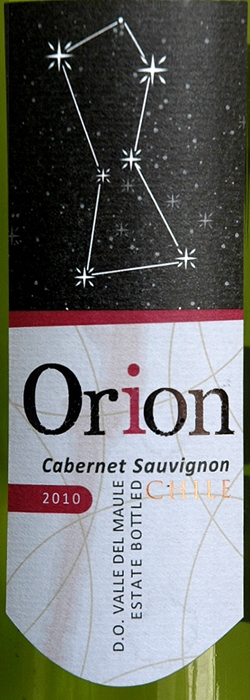When I was a young child during the last century, my father used to take me into the garden on clear but freezing winter evenings to teach me the names of the constellations. Being brought up in northern climes, I became very familiar with things like Taurus and the Great Bear and especially the splendid constellation of Orion. It’s one of the constellations that you can see almost everywhere in the world including Thailand, although I didn’t know that at the time.
Orion always was an inspiring sight, especially in the winter months when it stood majestically in the clear, cold northern skies. Years later, I was delighted to discover that the constellation was nearly always visible from my apartment in South London. I felt such affection for the stars of Orion that for a time I used to wonder whether I was an alien. Perhaps I am. At least it would account for the strange glances I get from time to time.
 One of our stars is missing
One of our stars is missing
You’ll know of course that the so-called “belt” of Orion is made up of three bright stars. Everyone knows that. Even the mangy parrot next door knows that. Their names, in case you may have forgotten, or possibly never knew, are Alnitak, Alnilam and Mintaka. If the names sound slightly Arabic, it’s because they are. Alnilam (it means “string of pearls”) is the centre star of Orion’s belt. It’s actually an enormous blue supergiant, thousands of times brighter than our Sun and at least forty times as big. Now, you are probably wondering why I’m telling you all this. (The thought had crossed my mind – Ed.)
Orion Cabernet Sauvignon 2010 (red), Chile (Bt. 399 @ Friendship)
Seeing the name of this wine in Friendship the other day brought back childhood memories of those freezing winter evenings, so I was compelled to try a bottle. But when I got it home and looked closely at the logo I realised to my horror and dismay that Alnilam, the middle star of Orion’s belt, had disappeared. Gone! I mean, how can you draw the most well-known constellation in the universe and get the most important bit wrong? How could someone simply forget one of the brightest objects in the night sky? Quite easily, it would seem.
Anyway, let’s get to the wine (I was hoping you would, sooner or later – Ed.) This is an entry-level wine from Bodegas De Aguirre SA, a family business with a strong agricultural tradition. In 2011 the company evidently received more awards in wine competitions than any other Chilean winery. But they won’t win very many awards from planets in the Alnilam system, I can tell you.
This rich, dark red wine has a friendly, jammy sort of aroma with reminders of herbs, but it doesn’t smell like a typical Cabernet Sauvignon to me – at least, not this bottle. Chilean wine laws state that wines for export must contain 85% of the grape variety shown on the label, so it’s quite possible that other grapes have been used in the blend. Although the wine is quite dry, the mouth-feel is very soft with hardly a trace of acidity. There’s an attractive base of soft and ripe tannins, although the finish is a bit on the short side. It has a rather high 13.5% alcohol content but it’s a pleasant enough rustic quaffer, though perhaps a tad expensive for what you actually get.
Four Rivers Cabernet Sauvignon 2012 (red), Chile (Bt. 395 @ Friendship)
For slightly less money, this strikes me as a better wine; firmer, more balanced and better focused. It comes from Gracia de Chile in Santiago, part of a group of wineries whose roots go back over a hundred years. I’d like to tell you the names of the four rivers but my knowledge of Chilean geography is a bit scanty so you’ll have to find out for yourself. Yes, I know life is full of disappointments, but that’s how it is.
This dark, red wine has a rich aroma of black fruit, fresh black cherries and vanilla with hints of violet and mint. It smells just like a Cabernet Sauvignon in fact, which is a good start. The mouth-feel is very soft and velvety and even though the wine is completely dry, there’s just the tiniest hint of sweetness from the fruit. There’s plenty of black fruit on the palate too and you’ll find that the richness of the taste develops significantly after about fifteen minutes or so. The tannins are very soft and gentle and the wine has quite a long and pleasant finish. Although the alcohol content is quite high at 13%, the wine gets away with it because there’s loads of fruit to balance out the alcohol. If you enjoy generously fruity reds with very little acidity or tannin, this might be just the ticket. Try it with steak or any rich meaty dishes.
Right. That’s it. Another column finished. Now I can go outside with a small glass of vino and gaze at the night sky with the dogs. With a bit of luck, I might see my three old friends, Alnitak, Alnilam and Mintaka. But I’ll double check that Alnilam is still there too.




